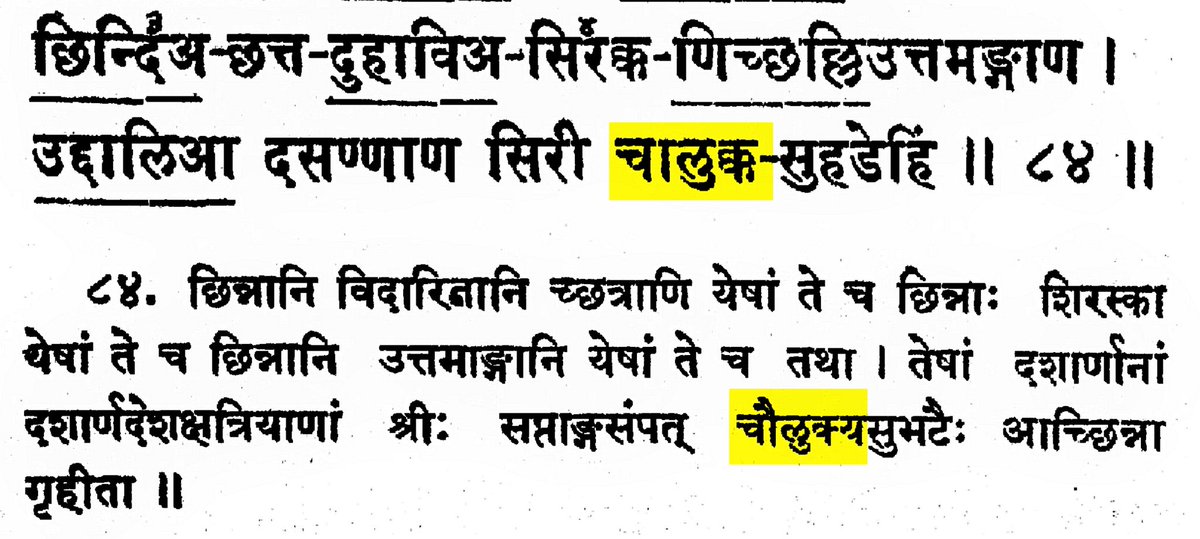Epigraphic and literary records pertaining that the Chaulukyas of Gujarat are synonymous with the Chalukyas of the Deccan. 

At first we have the Chalukyas of Lata proudly inscribed their lineage as Chalukya in the historical records.
A Yadava inscription dating back to 1069 CE references Gogiraja, the Chalukya monarch of Lata, affirming his connection to the Chalukya dynasty.
A Yadava inscription dating back to 1069 CE references Gogiraja, the Chalukya monarch of Lata, affirming his connection to the Chalukya dynasty.

The lineage of Gogiraja proudly embraced the name of Chalukya, a legacy upheld by both his father, Barappa, & his son, Kirtiraja. 

However, a notable distinction arises with Gogiraja's great-grandson, Trilochanapala, the Chalukya monarch of Lata, who referred to his lineage as 'Chaulukya' in his copperplate grant of 1050 CE.
This indicates that the terms Chalukya and Chaulukya are essentially synonymous.
This indicates that the terms Chalukya and Chaulukya are essentially synonymous.

The Chaulukyas of Gujarat have also been referred to by their lineage as both Chaulukya and Chalukya, as documented in the Jain chronicles of the time.
The Kumarpala Charita (Prakrit Dvayashraya Kavya) by Hemachandra (contemporary of Kumarpala Chaulukya), along with its insightful commentary by Purnakalasagani (contemporary of Visaladeva Vaghela), employs the terms Chalukka and Chaulukya in a fluid interchange. 

The Chaulukyas and Chalukyas trace their lineage to a common source, specifically from Brahma’s chuluka, as evidenced by the Vadnagar inscription of Kumarpala Chaulukya and the work of Bilhana’s Vikramankadevacharita, written in the reign of Vikramaditya VI Chalukya.




Upon a diligent scrutiny of the proofs laid forth, it may be discerned with great clarity that the terms Chaulukya and Chalukya bear a common etymological origin.
@rattibha @threadreaderapp unroll
• • •
Missing some Tweet in this thread? You can try to
force a refresh


















